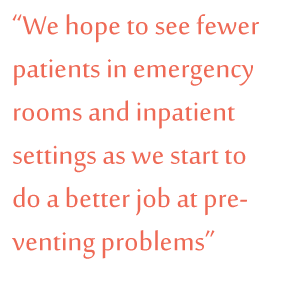Women with ovarian cancer may have somewhat better survival odds when they feel emotionally supported by family and friends, a new study suggests.
Of 168 ovarian cancer patients in the study, 95 had “high social attachment” – meaning they had relationships that made them feel emotionally secure and closely connected to at least one other person.
After almost five years, 59% of those women were still alive, vs 38% of patients with lesser emotional bonds.

The researchers are not sure of the reasons for the link. It seemed to go beyond practical factors, like having someone who helped patients out day-to-day. But the study cannot say whether a close emotional relationship, itself, affects women’s survival odds.
And a researcher not involved in the work cautioned against making too much of the findings.
It is “strictly a correlational study,” said Dr. James C. Coyne, director of the behavioral oncology program at the University of Pennsylvania School of Medicine in Philadelphia, in an email.
There could be various reasons for the connection between emotional support and survival, according Dr. Susan K. Lutgendorf of the University of Iowa in Iowa City, who led the new study.
“We’re talking about people who feel a close connection with someone else. They feel they have someone they can confide in,” Dr. Lutgendorf said.
One possibility is that women with such supportive relationships feel less stress – which, in turn, might affect their well-being in a number of ways. Based on other research, people who feel support from family and friends may stick with their medical treatment more closely, Dr. Lutgendorf noted.
But in past studies, she and her colleagues have seen some potential direct links. They’ve found that ovarian cancer patients’ levels of “social attachment” seem to correlate with certain markers of inflammation and immune function, for instance.
Still, no one knows if close emotional relationships can actually boost women’s cancer survival odds.
In fact, Dr. Coyne said, some clinical trials have looked at whether boosting social support, through support groups or psychotherapy, can extend cancer patients’ lives.
“And the findings are universally negative,” he said.
As reported online July 16th in the Journal of Clinical Oncology, the women were followed from the time of surgery for their ovarian cancer. They all completed questionnaires on social support and depression symptoms.
Even after adjustment for depression, age, and the stage of the cancer, women who felt strong emotional support were 13% less likely to die during the study period, the authors said. On the other hand, “instrumental” support was not tied to survival.
Dr. Lutgendorf said it was surprising that type of support was not also linked to survival.
What does it all mean for women with ovarian cancer?
“Many women have wonderful support from family and friends,” Dr. Lutgendorf said – but if they think they need more support, they should reach out.
Cancer centers often have “wellness” services that offer support groups or other types of psychological and emotional help, Dr. Lutgendorf noted. There are also national resources, like the American Cancer Society.
Dr. Lutgendorf also said doctors can ask cancer patients about their relationships – whether they have “someone they can talk to,” for instance.
Dr. Coyne said that if he were to study the issue, he’d want to follow a larger group of women over time. He would want to monitor any “medically significant events” and see how social relationships helped women deal with those health problems.
“My basic hypothesis would be that women who have close relationships have more opportunities to be vigilant for and address surgical complications, (other concurrent illnesses) and signs of (cancer) recurrence in a timely fashion,” Dr. Coyne said.
He was critical of the theory that emotional bonds could have effects on the immune system that boost cancer survival. For one, he said, it’s not clear yet whether and how various “immunological variables” affect cancer progression.
He cautioned against raising people’s hopes on that front.
“Cancer patients are particularly vulnerable to unrealistic expectations that they can extend their life by strengthening their immune systems,” Dr. Coyne said.
SOURCE: http://bit.ly/QfBx7T
J Clin Oncol 2012.
Copyright © 2012 Reuters Limited.




